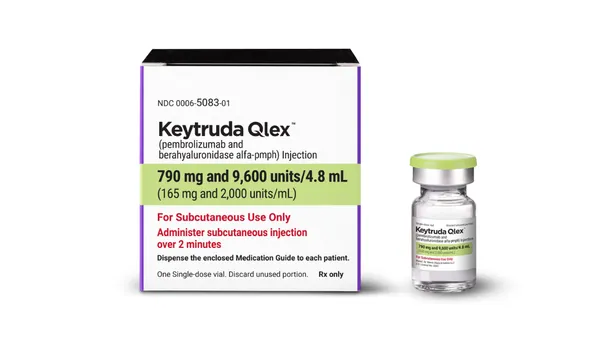Pharma Trax Sales, Marketing, and R&D Trends Affecting the Healthcare Industry Public Awareness of Clinical Trials Grows Awareness of clinical trials among the general public has grown over the last three years, while physicians struggle to find the time, personnel, and resources to participate in trials. These are the findings of two separate surveys conducted by Harris Interactive. One survey, focused on patients’ perceptions, was based on online interviews with a nationwide cross section of 5,822 adults. Of these respondents, 656 had participated in at least one clinical trial. This year’s survey found that there was an increase in the number of people – 19% – who say they have had the opportunity to participate in clinical research. Last year, the survey reported 15% and in 2001, 13%. The number of respondents who claim to have participated in trials has increased to 11% this year from 8% in 2001. Patients who participated in clinical trials gave many different reasons for doing so: to advance medicine or science, to earn extra money, to help others with the same medical condition, and to obtain better treatment. Other factors that influenced people included information they read, saw, or heard about a study; wanting to obtain information about treatment or improving their health; and curiosity about the study or medical practice. The second online survey polled 431 physicians. According to Harris Interactive, currently about one in every eight (13%) physicians is a clinical investigator, while one-third (34%) have participated in the past but are not currently involved, and half (53%) have never conducted a clinical trial. The reasons given most often for not participating were logistical: the time commitment involved (32%); a lack of personnel support (30%); not having the resources to run a successful trial (26%); and the paperwork burden (24%). One positive finding: one in 10 (11%) physicians say they were interested in becoming an investigator but did not know where to begin. Harris researchers report that while a variety of factors influence physicians to participate in clinical trials, altruism is one of them. A large majority of current clinical investigators say they are influenced to participate by the opportunity to help advance science and to benefit their patients. Others say they are influenced by the prospect of being viewed as a thought leader or by the fact that they have the necessary support staff, patients asking for experimental drugs, and the monetary compensation. Greater Role for Market Research The pharmaceutical industry is moving away from viewing market researchers solely as providers of tactical marketing support. A recent report from Cutting Edge Information – Pre-Launch Pharmaceutical Market Research: Decision Support for New Product Development – found that companies are relying on these individuals as internal consultants and proactive decision supporters. According to Cutting Edge analysts, executives today view the market-research function as a tool that shapes their companies’ futures and serves as a company’s interface between the markets it serves and a variety of internal departments, including sales, new product planning, business development, clinical and regulatory affairs, and medical affairs. The average market-research function receives the second-largest amount of commercialization dollars – an average of 18% of total commercial spending – following only the marketing group. Pharmaceutical companies regularly spend $500 million to launch a new product but remain reluctant to invest market research dollars in prelaunch stages to determine whether the market exists for success. Researchers at Cutting Edge Information say there is an opportunity for pharma companies to invest more in early-stage market research to drive R&D and marketing years before a product reaches the market. DTC Advertising Prompts Action A National Health and Wellness Survey completed by Consumer Health Sciences (CHS) found of the respondents who recalled seeing or hearing a prescription pharmaceutical advertisement in the past six months, 12% (18.4 million people) were prompted to take action as a result. Taking action was defined as having already done, or as planning to do, any of the following: speak with a doctor, visit a Website, call a toll-free number, consult a medical reference, or consult a family member or friend. As a group, DTC responders share several characteristics. Compared with the general population, they report that they: suffer more concurrent diseases (29% more); score lower on a general measure of overall mental and physical well being; visit the doctor more frequently (21% more visits in the last six months); and spend more per month on prescription medications (29% more). “Critics of DTC advertising often argue that it somehow generates a need where none exists,” says Jane A. Donohue, Ph.D., and CEO of Consumer Health Sciences. “If we only saw that DTC responders went to the doctor more often and spent more on prescription medications, the facts would support their theory as well as not; we simply wouldn’t know what was the cause and what was the effect.” Physician Use of Online CME Up The number of continuing medical education credits earned online by primary-care physicians grew 25% in 2004, but eCME is the preferred learning channel for only one physician in 10, according to the second annual Pri-Med CME Insight Survey. “By a wide margin, medical meetings remain the preferred source for CME among physicians,” says Anne Goodrich, research director of the Pri-Med Institute. “But while eCME today accounts for only 10% of all CME credits earned by primary-care physicians, it is clearly an educational medium channel that is beginning to reach a broader audience.” The survey of primary-care physicians throughout the United States found that live educational forums remain the preferred source of CME by a margin of four-to-one, followed by enduring materials, professional journals, and eCME. The least popular learning method is hospital grand rounds. Key criteria cited in choosing a medical meeting are relevance of clinical topics, caliber of speakers, convenience of schedule, and time required. Location of conferences is also a primary consideration. More than 70% of doctors surveyed say a key criterion for attending a meeting is whether it is being held less than 200 miles away, compared with 67% the year before. The proportion of physicians willing to travel to attend a national conference declined from 34% to 30%. Global Pharmaceutical Report Calls for New Approaches To Address Big Pharma’s Challenges Pharmaceutical companies will have to strive harder to juggle successfully the conflicting demands they encounter in the global health-sciences market, according to a new report by Ernst & Young. “We see the pharmaceutical sector navigating an increasingly complex global environment driven by competing market and consumer pressures, regulatory changes, and a constant need for life-saving innovations,” says Carolyn Buck Luce, senior partner in the global accounts group at Ernst & Young, The report, titled Progressions: Global Pharmaceutical Report 2004, finds that in spite of a concerted effort by the industry to improve perceptions by demonstrating the benefits of pharmaceutical products, few stakeholder groups appear satisfied. Wall Street remains jittery; the public and payers perceive the price of drugs as too high, and scrutiny over regulatory compliance continues to increase. R&D productivity is under pressure, and the introduction of innovative drugs has slowed in recent years. Improvements in early-stage pipelines are, however, on the horizon, and companies have made progress allaying international tension over access to certain essential medicines in developing countries. The pharmaceutical industry is a convenient target for policy makers and the public in the United States and abroad, and industry leaders argue in the report that the industry itself must take the lead in addressing the situation – particularly the disparity in drug prices between the United States and other developed nations – or political pressure for lower prices might make government price controls and reimportation inevitable. Recent expansion of the U.S. market under the Medicare Modernization Act is likely to accelerate pricing pressures throughout the industry globally. “Rather than merely continuing to oppose price control and reimportation initiatives at the certain risk of consumer backlash, the U.S. pharmaceutical industry is challenged to take the lead in a fresh two-part approach, one that is coordinated and future oriented,” Ms. Luce says. “First, it must address drug prices and geographic price discrepancies. Second, the industry must communicate more effectively with all stakeholders to re-establish its credibility in the healthcare arena.” Thought Leader Spending Reaches $120 Million A study from Cutting Edge Information reveals that pharmaceutical companies now allocate 24% of their total marketing budgets to thought-leader activities. The average marketing budget for a pharmaceutical brand is $120.7 million, according to Cutting Edge Information’s report, Pharmaceutical Thought Leaders: Brand Strategies and Product Positioning. From the brand budget about $30 million is allocated to fund thought-leader management programs throughout development. The greatest expenditures come during Phase IIIa and launch, where companies spend $8.3 million and $10.5 million, respectively. According to Cutting Edge data, one profiled company spent as much as $30 million on opinion leader management during launch. Thought leader budgets are on the rise in the pharmaceutical industry, say Cutting Edge researchers. As more companies recognize the impact thought leaders make in the market they are supporting them with more sophisticated and integrated programs. PRINCIPALS FOR MARKET RESEARCH SUCCESS 1. Increase investment in key early-stage market research activities. 2. Increase early-stage market research staffing. 3. Partner with internal clients to identify problems and play a more strategic role. 4. Stay involved in outsourced activities to maintain vendor relationships and confirm key findings. 5. Combine market research and competitive intelligence efforts. Source: Cutting Edge Information, Durham, N.C. For more information, visit cuttingedgeinfo.com. The wrong questions have been asked for too long, leading to insufficient answers, inappropriate actions, and diffused accountability, says Carolyn Buck Luce, Senior Partner in the Global Accounts Group at Ernst & Young. Strategic components to Building key opinion leader relationships ï Investment: The average brand allocates about $30 million to support thought-leader activities throughout the development cycle. ï Relationship Management: The most lucrative thought-leader contacts are consistently managed and maintained by developing win-win relationships. ï Early Involvement: In the last two years, more companies have formally begun their thought-leader initiatives earlier in development, some before Phase I. ï Local Thought-Leader Visibility: Recently, local thought-leader usage has been on the rise, indicating more market impact at lower costs across the industry. Source: Cutting Edge Information, Durham, N.C. For more information, visit cuttingedgeinfo.com. Follow up Consumer Health Sciences, Princeton, N.J., wholly owned by Grey Healthcare Group, collects and analyzes the attitudes, opinions, and demographics of consumers/patients around the world with an emphasis on healthcare habits, and drug consumption and satisfaction. For more information, visit chsinternational.com. Cutting Edge Information Inc., Durham, N.C., provides implementable research and consulting to the pharmaceutical industry and the financial-services industry. For more information, visit cuttingedgeinfo.com. Ernst & Young, New York, a global leader in professional services, is committed to restoring the public’s trust in professional services firms and in the quality of financial reporting. For more information, visit ey.com. Harris Interactive, Rochester, N.Y., is a worldwide market research and consulting firm best known for The Harris Poll. For more information, visit harrisinteractive.com. The Pri-Med Institute, Boston, is the research and accreditation affiliate of Pri-Med, a division of M|C Communications LLC and a producer of continuing medical education for primary-care physicians. For more information, visit mc-comm.com/pmi.
An article from












